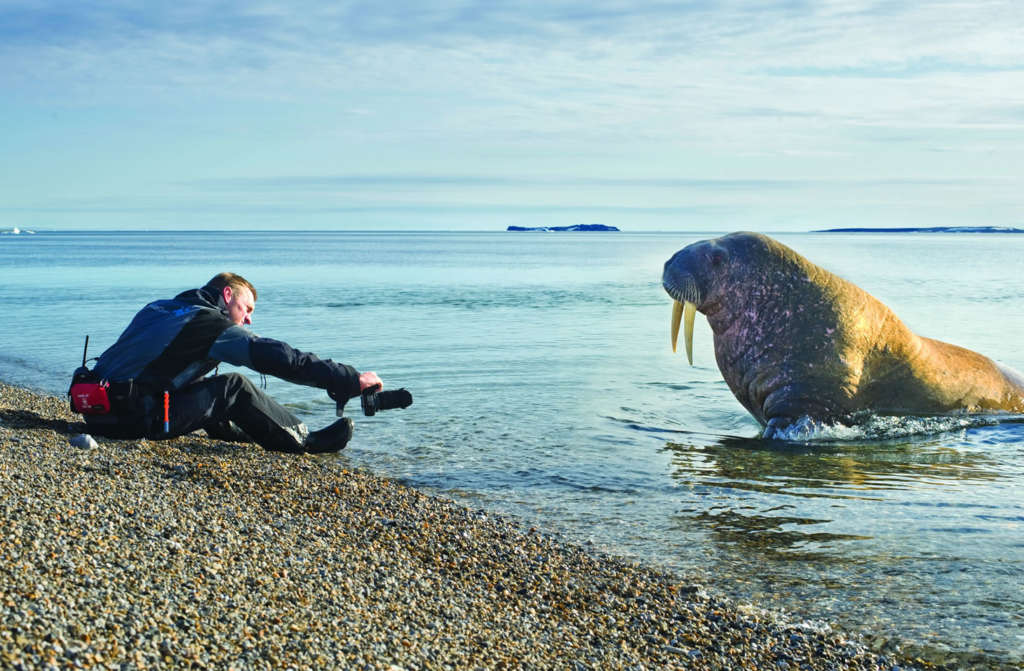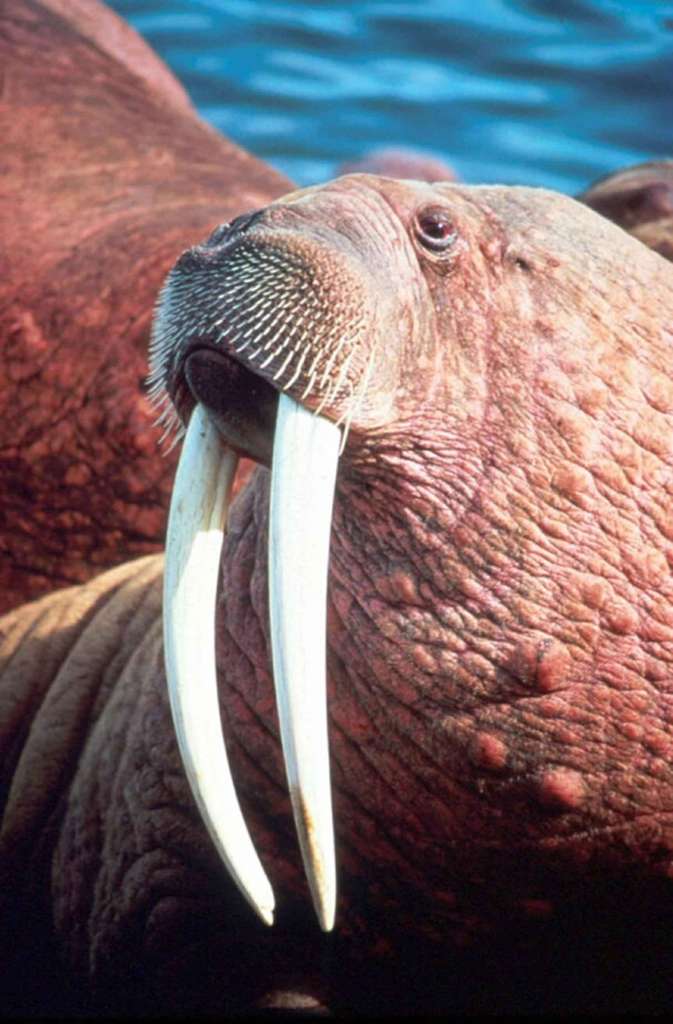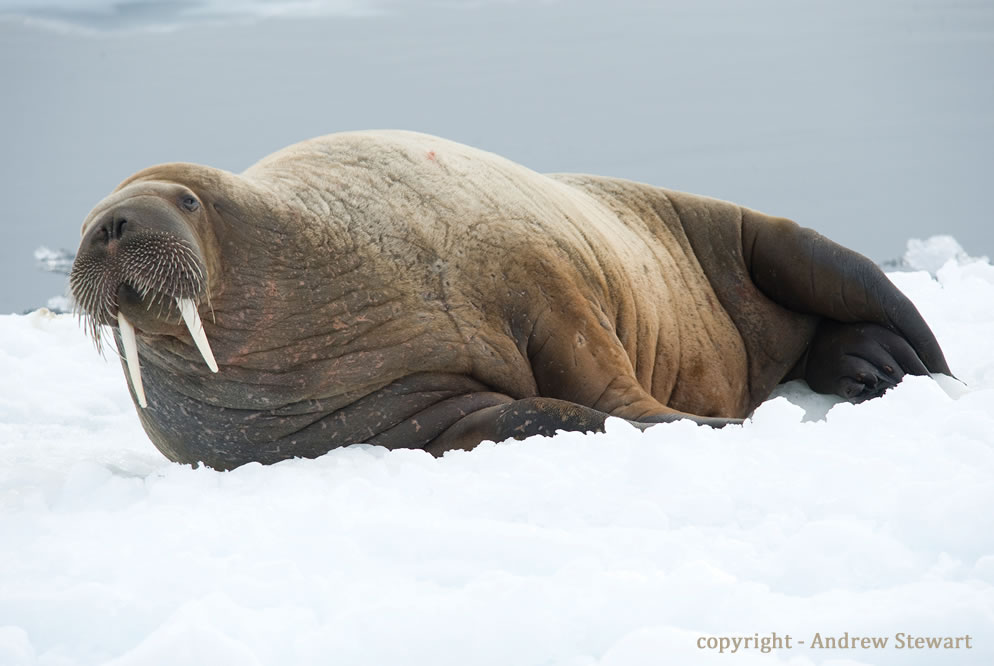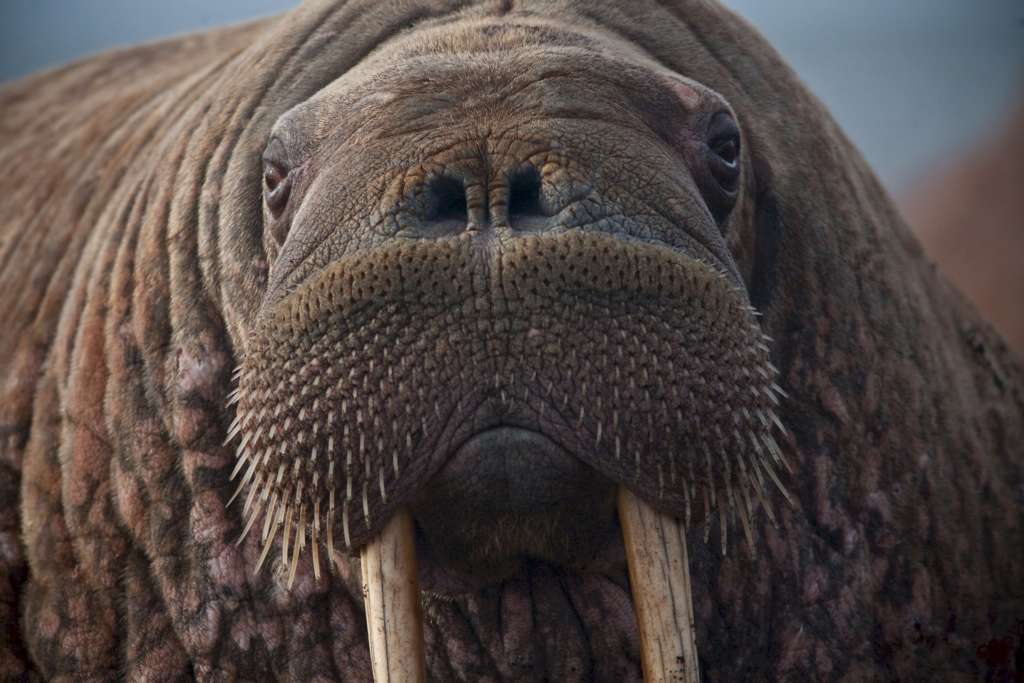Tooth-Walking Sea Horses (aka Walrus)
We take a look at one of the most amazing residents of the Arctic, the mighty Walrus or “Tooth-Walking Sea Horse”.

by Noah Patton
The Walrus, or Odobenus Rosmarus (translated from Latin: ‘tooth-walking seahorse’) is the only living species of animal in the genus Odobenus. They are divided between two subspecies, the Atlantic and Pacific walrus.

On average a Pacific walrus will weigh between 800 to 1700kg. The Atlantic species is slightly smaller, weighing on average 10-20% less than the Pacific walrus. Their tusks will often reach lengths of over one metre. As their Latin name suggests, they use these tusks to drag themselves out of the water onto ice. Walrus have little fur, instead they have extremely thick layers of skin and blubber to keep themselves warm in their cold climate. Their skin can be 10cm thick at the neck, with a blubber layer 15cm thick beneath that.

J. R. R. Tolkien investigated the etymology of the word walrus while he worked on the Oxford English Dictionary as an English professor. He believed the word was derived from Germanic languages, probably Dutch or Old Norse. In Dutch, walvis is ‘whale’ and in Old Norse hross is ‘horse’. In Old Norse, hrossvalr would be ‘horse-whale‘. As the word passed on through time to Dutch it became inverted and incorporated aspects of the Dutch language eventually becoming walros/walross and eventually the word we use now, walrus. [1]
As the subspecies of Walrus suggest, they live in areas of the Pacific and Atlantic oceans. They predominately live in shallow areas close to the arctic circle, like north of the Bering Strait and along northern shores of Alaska or Siberia.
Walruses prefer shallow areas as they mostly feed on molluscs on the sea floor. They are extremely effective at this form of foraging due to their whiskers or vibrissae. For a marine animal like a walrus, the vibrissae are in contact with the water, feeling tiny vibrations caused by the movement of their prey on the sea floor. Often the bottom of the sea floor is murky and dark, these whiskers enable them to more accurately locate their food. Being opportunist feeders, walruses will eat almost any small marine organism, from shrimps and crabs to tube worms and sea cucumbers.

Walruses are fortunate to have only two natural predators; the orca and the polar bear. However, both these animals do not primarily hunt walruses as they can be formidable opponents. Walruses can fatally injure a polar bear despite being injured itself, and the polar bear will usually give up on the attack. Orcas pose a greater threat as they use pack tactics to attack the creatures with little threat to themselves. Even so, walruses have successfully defended themselves against the much larger mammal. [2]
However, walruses were unfortunately exploited by early human hunting in the 18th and 19th centuries. The Atlantic subspecies was near extinction due to exploitation by American/European sealers and whalers. They were usually hunted for their ivory tusks – Americans and Europeans found the taste of their meat to be repulsive and were only eaten out of necessity. Currently it is illegal nearly everywhere in the world to hunt walruses, as well as illegal to sell or trade their ivory. The only exception is Chukchi, Yupik and Inuit people. As walrus were important to native Arctic religion and folklore natives are permitted to hunt small amounts each year.
Climate change has also had an enormous impact on the species. The BBC documentary series “Seven Worlds, One Planet” revealed shocking footage of hundreds of exhausted walruses falling down cliffs to their death. David Attenborough blamed the incident on the damaged Arctic ecosystem. Where walruses were once able to rest on sea ice, due to climate change, the recession of the ice has caused the large populations of the species to inhabit relatively small areas. As there is not enough room for them, they must move further up the beaches onto steep cliffs. After they have scaled these cliffs, they become exhausted, and on the way down they often fell fatally. It is disturbing evidence of how climate change is directly affecting the animals that inhabit our planet.
Resources:
- http://public.oed.com/history-of-the-oed/newsletter-archive/jrr-tolkien-and-the-oed/ Peter Gilliver, Oxford English Dictionary
- http://www.cascadiaresearch.org/oldsite/robin/kwinteractionsrev.pdf Thomas Jefferson, A Review of Killer Whale interactions with other marine mammals: predation to co-existence

